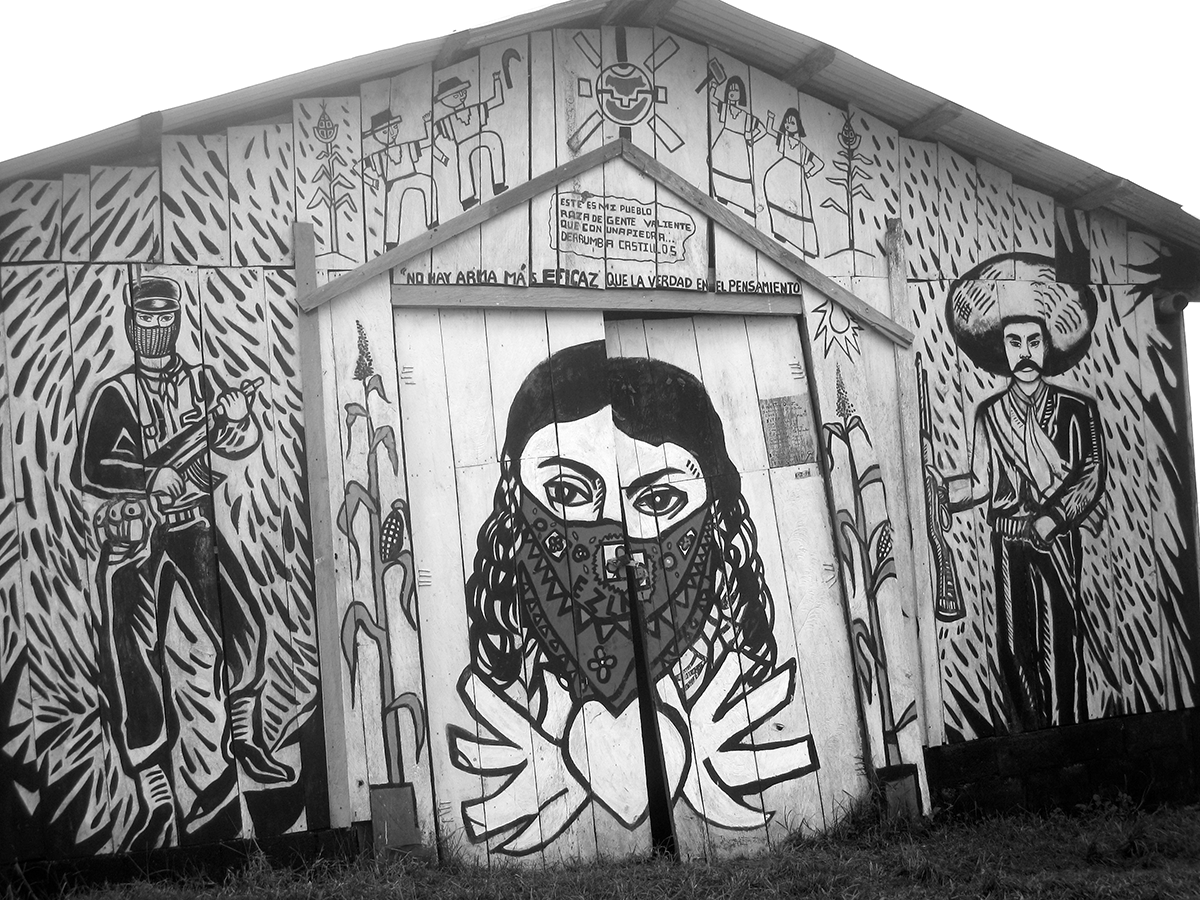
by Lindsay Naylor, PhD Candidate, Department of Geography
As I approach the gates to the administrative center of Oventik in Chiapas, Mexico, I see two guards keeping vigil. Immediately an image of camouflaged or khaki-suited, gun-toting men comes to mind. However, the guards waiting to greet visitors and take their identification and information for entry are two women. One is a young woman wearing the skirt and brocaded blouse characteristic of Mayan women in the highlands. The other is a grandmother wearing a jean skirt and long sweatshirt. They carry no arms; by insistence of the community guns are forbidden here. They both wear balaclavas that expose only their eyes and mouths. They are Zapatistas. These women are not exceptional in their role as Zapatista guards; they are illustrative of the nature of the Zapatista movement, which has, since its inception in the late 1970s, had women as leaders, organizers, and supporters.
My research in Chiapas is with fair trade coffee farmers and is focused on examining how people supportive of the Zapatista movement, who reside in self-declared autonomous “communities in resistance,” are using a combination of subsistence food production practices and other income earning activities to maintain autonomy from the state. The Zapatista movement has been heralded as one of the most important social movements of the latter half of the twentieth century, yet every day, the supporters of the movement must negotiate the vicissitudes of life in resistance. One piece of my work is concentrated on providing an analysis of everyday life in Zapatista-aligned communities to understand how men and women farmers link into transnational movements (e.g. fair trade) and how the dynamics of fair trade production and subsistence production are managed and weighed against other activities, both within the movement and as part of community and household roles.
Zapatista-aligned communities are a unique place in which to carry out such research because of the challenge that the movement has presented to traditional gender roles in Mayan communities in the highlands. The Zapatistas made their movement publicly known through an armed uprising timed to coincide with the commencement of the North American Free Trade Agreement on January 1, 1994. Although the armed rebellion lasted twelve days, the resistance remains, and the Zapatista demands for indigenous rights and autonomy are still ongoing. Within this, there is a strong movement for women’s rights, and women have, through their weaving, their protest, their leadership, and their “Revolutionary Women’s Law,” created a strong and lasting voice for the liberation of women in Chiapas and elsewhere.
An important piece in the ongoing struggle for rights and autonomy has been the creation and maintenance of cooperatives for income-earning activities. Fair trade coffee production represents one such activity, yet this is largely the purview of male farmers (although 15 percent of the members of the fair trade coffee cooperative that I work with are women). This imbalance has been recognized by men and women alike, and other cooperatives, including baking, honey harvesting, and weaving have been important places of leadership and gathering for women in the communities. Due to the land-space and labor-time allotted to coffee production, it appears to be the most important activity, and indeed, the linking up with transnational networks of coffee roasters and sellers has increased the visibility of the movement and has been a critical component of maintaining the resistance. Yet my research demonstrates that fair trade is viewed by coffee producing households as “comercio mas justo” (more fair trade) and as simply a “window to better money.” The women’s cooperatives, especially the weaving one, have been significantly more successful at earning income for the communities, and men and women were both quick to point this out to me. The sale of community-produced goods to tourists that travel to Oventik and through shops in the nearby destination of San Cristóbal de las Casas has created important cash revenue for the communities. Subsistence communities are largely self-reliant in food production; however, cash is necessary for times of food insecurity, for the purchase of goods that cannot be produced at home (soap and salt, for example) and for medical care in times of illness. This income creates an important space for cooperative work by women and men, which is vital to maintaining the core values of the social movement as part of everyday practice.
—Lindsay Naylor is a doctoral candidate in the Department of Geography and coordinator of Women and Political Resistance, a new CSWS research interest group. Her preliminary dissertation research was funded through grants from the Center for Latino/a and Latin American Studies and the Center on Diversity and Community at the UO. She will return to the field in January 2013 to join the farmers in the coffee harvest.

